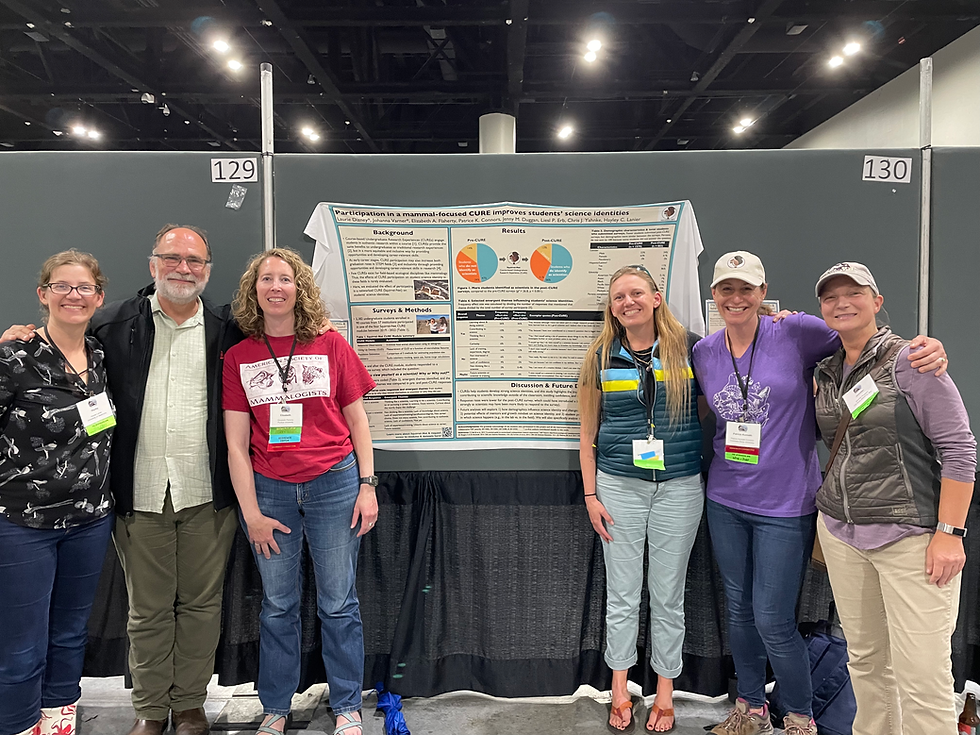Keeping Up With the Squirrel-dashians (Squirrel-NetSummer Update)
- Raven Patrick

- Sep 30, 2022
- 2 min read
Fall is just around the corner, so let’s revisit some of the squirrely fun we accomplished this summer! Did you have any interesting squirrel encounters? What about reading or conducting some neat research? Did you find other squirrel fanatics? Here at Squirrel-Net, our nuts have been conducting some fun research while working on getting our modules into the undergraduate classroom. Read on to learn a bit more about all of the squirrely-business we’ve been up to!
Dr. Chris Yahnke and the Giving Up Density (GUD) Module
Over the summer, Dr. Chris Yahnke of University of Wisconsin conducted a Giving Up Density (GUD) study with a class at the Kemp Natural Resource Station. In this CURE module, students investigate animal foraging habits in relation to risk, animal condition, habitat quality, and many other variables, which helps us understand how foraging habits are influenced by the environment. Dr. Yahnke and his class focused on red squirrels (Tamiasciurus hudsonicus).
The team studied whether red squirrels can be more risk-taking and fearless than other species of squirrel. Red squirrels tend to spend more time on the feeding trays, possibly showing that they will tolerate a dangerous environment longer than other squirrel species.
Although the team had a hard time getting the squirrels into the trays this year, they had a lot of fun and managed to capture some adorable pictures of red squirrels through their camera traps!

Results from our piloted Flight Initiation Distance (FID) module
CSUMB graduate students Josh Beasley and Rebecca Roberts presented results from the pilot Flight Initiation Distance (FID) module over the summer. FID is the distance in which an animal will begin fleeing a perceived threat. Running away sooner indicates a greater perceived threat, whereas sticking around and running away later means the animal feels less threatened.
The team looked at how masks worn during the COVID-19 pandemic affected how animals perceive human threats across five North American groups of wildlife, including ground squirrels and tree squirrels.
Interestingly, masks did not affect the FID for any of the observed species. Instead, the animal’s life history and environmental factors were the best predictors of FID, suggesting that masks do not affect how animals perceive humans.


Squirrel-Net at #ASM2022!
Several of our nuts were also at the annual American Society of Mammalogists (ASM) conference again this year, where we focused on getting more attendees involved in course-based undergraduate research experiences (CUREs). Because they introduce all students in a class to a research experience, CUREs are an important way to increase diversity in science and give undergraduate students an opportunity to develop meaningful connections.
To lower barriers for implementing CUREs, the team led a DIY CURE Exercise where attendees developed ideas for CUREs in courses they were currently teaching or might be teaching in the future. Do you have an idea for a CURE you might implement? Reach out to our research team, and we can help you make it a reality!
We hope to be leading another workshop on networked CUREs at next year's ASM conference in Alaska (#IMC13). Will we see you there?!




Comments